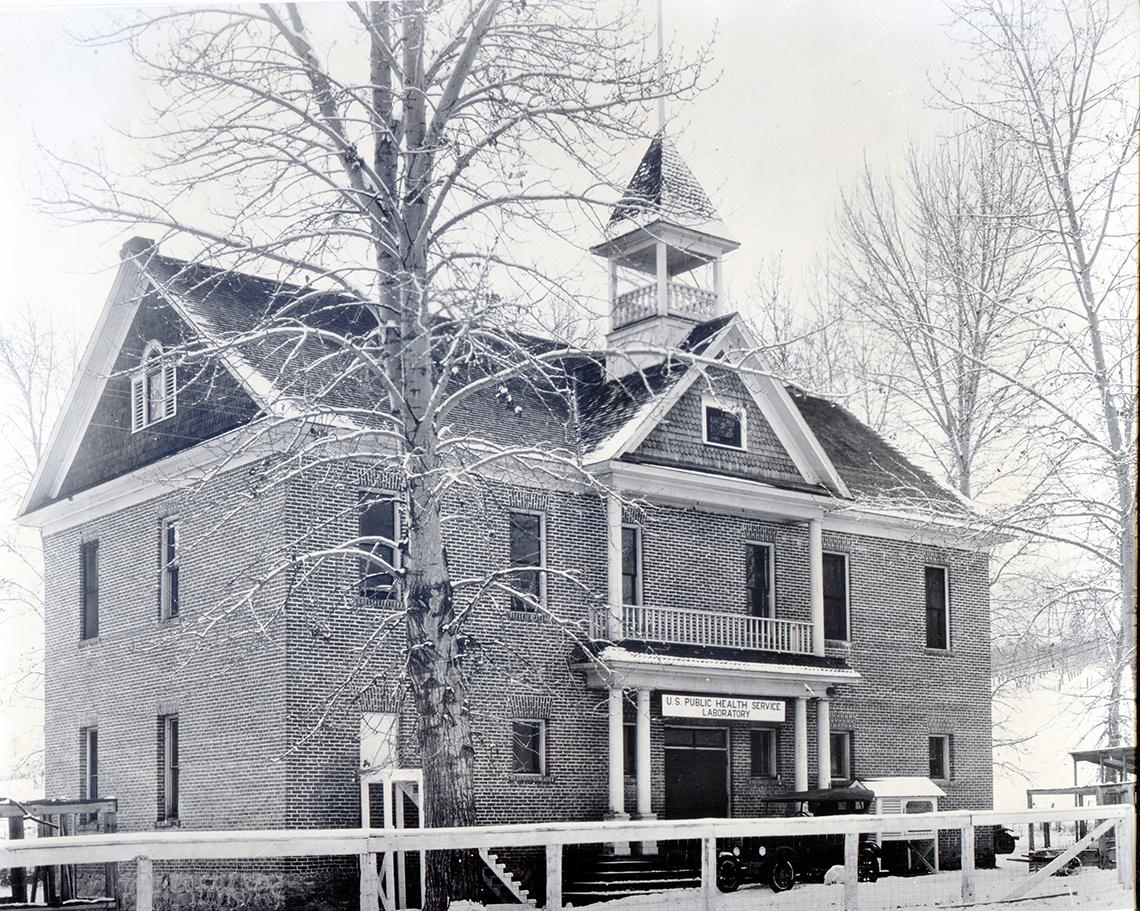ROCKY MOUNTAIN RESEARCH ORIGINS
New Website Celebrates 100th Year of NIAID’s Montana Labs

Photo: OFFICE OF NIH HISTORY AND STETTEN MUSEUM
A new disease, people dying needlessly and scientists racing to discover what causes it and how to stop it—sound familiar? But it was the early 20th century, not the early 21st century, when scientists from the Hygienic Laboratory (precursor to NIH) and the state of Montana did what seemed impossible at the time: They described a new disease and developed a vaccine for it in only 22 years. The 100th anniversary of the establishment of the Canyon Creek Schoolhouse Laboratory, where the Rocky Mountain spotted fever (RMSF) vaccine was developed in Hamilton, Mont., is being celebrated in a new website by the Office of NIH History and Stetten Museum (ONHM) and Rocky Mountain Laboratories (RML).
RMSF was often fatal. By 1921, researchers had discovered that Rickettsia rickettsii, a bacteria carried by infected ticks, caused the disease. But could it be prevented? At a time when a binocular microscope was advanced technology and molecular biology was unknown, the answer to that question was anything but assured.

Photo: OFFICE OF NIH HISTORY AND STETTEN MUSEUM
In September 1921, everything from a small laboratory housed in a woodshed was loaded onto one truck and moved to the laboratory’s new home—the empty Canyon Creek Schoolhouse. It was an auspicious move: Dr. Ralph Parker, an entomologist for Montana, was joining forces with physician Dr. Roscoe Spencer of the Hygienic Laboratory at a new Public Health Service field station.
The ONHM website uses many of the wonderful collection of photographs taken of the laboratory and its staff during the years of 1921 to 1928, when the laboratory was located in the schoolhouse, including photographs of the steps used to make a vaccine for RMSF out of ticks. The website includes a page with RMSF basics and the previous RMSF research that began in 1902.
Another section of the website pays homage to those people who died while researching the disease at the Canyon Creek Laboratory—William Gittinger, Henry Cowan and Arthur Kerlee.
A lighter section explores how the story of the research and Spencer’s experiments upon himself were interpreted in popular culture. For example, in 1936, a highly romanticized tale of RMSF vaccine research starring swashbuckling star Errol Flynn even became a high-grossing movie called Green Light.
Investigating a new disease and trying to prevent or treat it is nothing new for NIH scientists—it’s why the Hygienic Laboratory was created. The RMSF work begun at the Canyon Creek Laboratory 100 years ago this month was particularly important because it jumpstarted research into tick-borne diseases, resulted in a life-saving vaccine and eventually led to the development of RML, now part of NIAID.
For more history, visit https://history.nih.gov/display/history/Canyon+Creek+Schoolhouse+Laboratory+100th+Anniversary+Intro.
For a glimpse at what’s in RML’s future, visit Seen.
